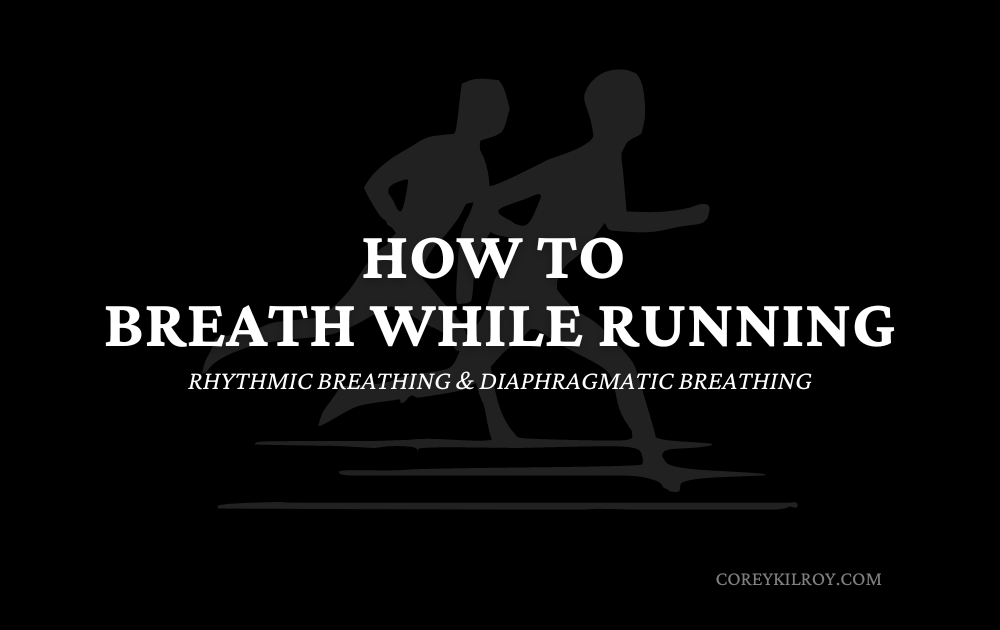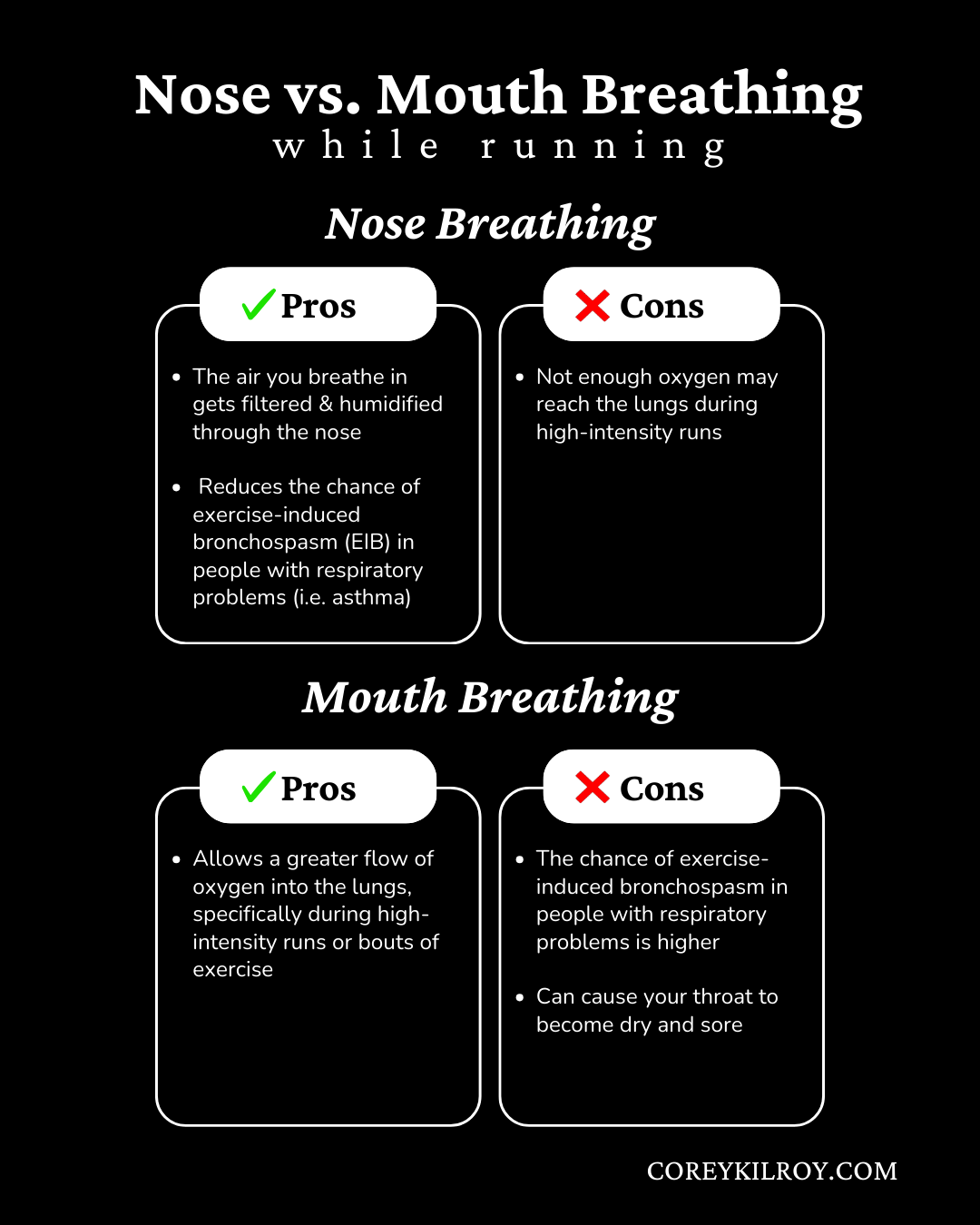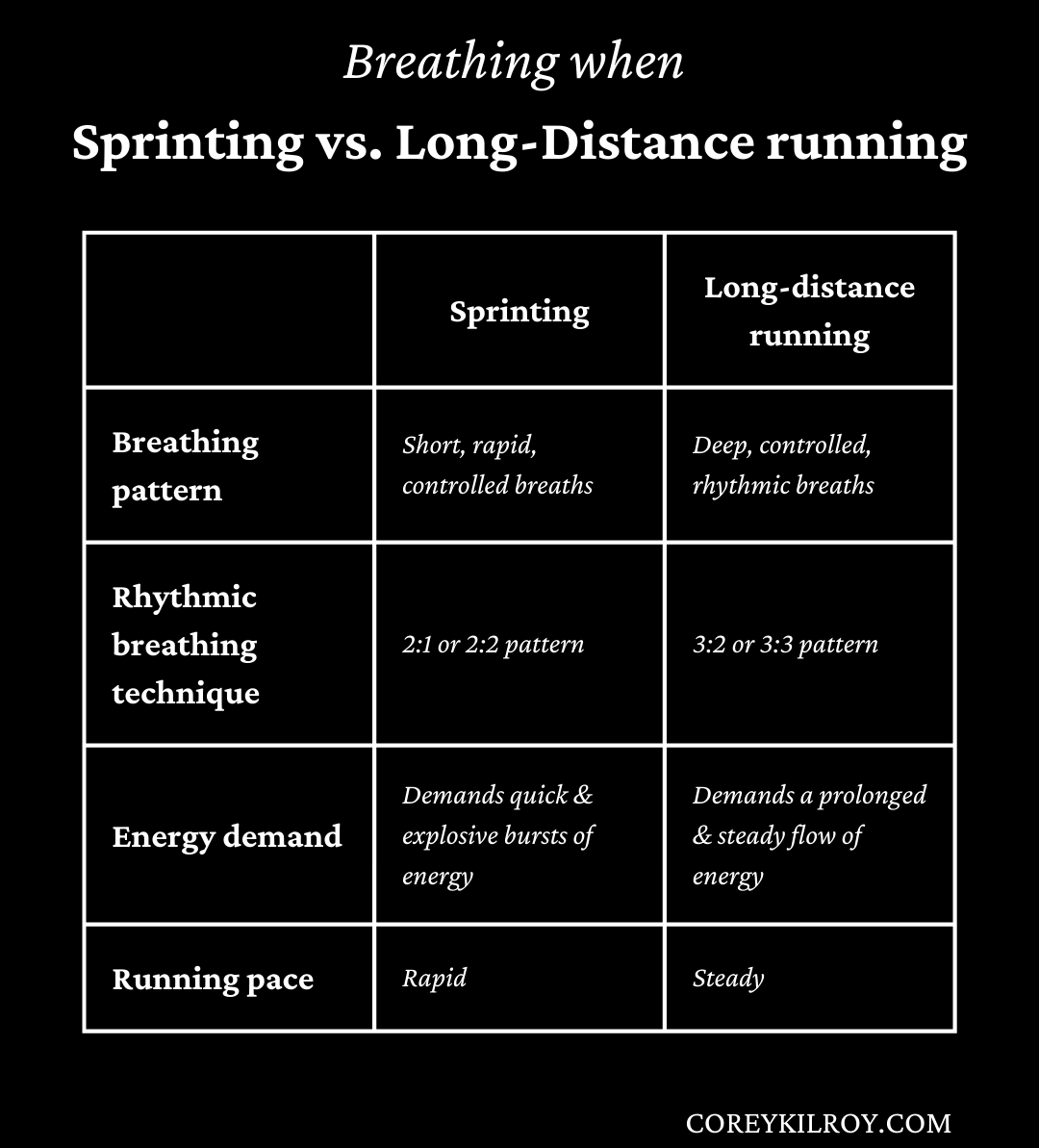How to Breathe While Running

Ever since I started running, it has turned into a form of active meditation that I've happily welcomed into my life.
But adopting this form of meditation becomes a lot more difficult when you’re out of breath.
Many runners face common problems like being out of breath, wheezing, chest tightness, side cramps, and fatigue.
To minimize or even get rid of these problems altogether, breathing techniques like rhythmic breathing and diaphragmatic breathing are great tools for improving your overall running experience.
Why is breathing essential in running?
Well, firstly, it’s quite obvious right?
Breathing is a fundamental function of a person’s life.
To break it down, breathing relies on various muscles in the chest, primarily the diaphragm, which separates the chest from the abdomen.
When you inhale, your diaphragm flattens, expanding the lungs to draw in oxygen.
When you exhale, the diaphragm returns to its resting position, aiding in the release of carbon dioxide.
During strenuous activities like running, your breathing plays a crucial role in your efficiency while running short or long bouts of exercise, as it ensures sufficient oxygen intake to support muscle function and energy production.
Training the diaphragm and mastering proper breathing techniques are key to improving running performance by optimizing airflow into the lungs.
When you think about it this way, then you’ll realize how proper breathing during running can help you run longer distances, reduce fatigue, and achieve better results overall.
Nose vs. Mouth breathing
For a long, long time, enthusiasts have debated over the benefits of nose vs. mouth breathing, with each having a preferred method.
Nonetheless, here are some pros and cons of each:

As you can see, there are various advantages and disadvantages to both methods.
In general, you may choose nasal breathing when running at a slower pace, and mouth breathing when going for higher-intensity runs.
Ultimately, you can also mix the two methods by inhaling through your nose and exhaling through your mouth. But in any case, you should always stick to what works best for you!
What breathing techniques help improve your running?
No matter what breathing method you choose, some breathing techniques can help you further optimize your performance while running.
Let’s dive a little deeper…
1. Rhythmic breathing technique
Rhythmic breathing refers to synchronizing your breaths with your steps.
I’ve read that the US military even likes to utilize this technique during training.
Digging deeper, when we breathe, our core muscles and diaphragm are most stable when we inhale, as opposed to when we exhale.
Therefore, establishing a rhythmic breathing pattern promotes efficiency while running, allowing you to maximize the amount of oxygen you take in each breath, and lessening the stress on your body.
Here are some common patterns of technique:
- 2:1 pattern: Inhale every 2 steps and exhale at the next step. This pattern is adequate for faster and high-impact runs.
- 2:2 pattern: I tend to use this technique most often. Inhale every 2 steps and exhale every 2 steps, equally.
- 3:2 pattern: Inhale every 3 steps and exhale every 2 steps. This pattern is recommended for jogging or gentle running.
- 3:3 pattern: Similar to the 3:2 pattern, but the exhale happens every 3 steps.
2. Diaphragmatic breathing technique
Diaphragmatic breathing, informally known as belly breathing, involves consciously engaging the diaphragm to take deeper breaths and expand the lungs to their maximum capacity.
This technique, in nature, optimizes oxygen intake, which can boost your performance and make you less prone to experience side cramps.
Here’s how to practice:
- Lie on your back on a flat surface, bend your knees, and place your feet on the ground.
- Put one hand on your belly, just below your rib cage, and the other hand on your chest.
- Breathe in slowly through your nose. Feel the air as it comes in.
- Let the air in deeply to your belly and feel how it expands. The hand on your chest should not rise.
- As your belly rises, and you feel your lungs filling up, start tightening your abdominal muscles so you can push your diaphragm down and out.
- Exhale air slowly, taking at least 2 times longer to exhale the air than it took you to inhale it. The hand on your belly should go back to its original position.
Start by doing this for a couple of 5 to 10-minute sessions a day while resting, and pick up the frequency when you feel comfortable.
Over time, you can slowly start to incorporate these exercises into your runs!
3. Good posture while running
While breathing techniques are important, all of it means nothing if your posture while running isn’t optimal.
A good posture is achieved by:
- Imagining a thread pulling your head above your torso–keeping your head in line with your spine
- Relaxing your shoulders
- Avoiding tilting your chest forward
This posture will allow you to breathe more efficiently while running.
As with anything, always keep take it slowly at the start and get comfortable before trying to pick up the pace.
Breathing when sprinting vs. long-distance running: is there a difference?
Sprinting and long-distance running are excellent ways to improve your overall fitness and performance, but there are some differences between them when it comes to breathing.
Let’s take a look…

In the end…
Always remember the most cliché metaphor of all time – “practice makes perfect”.
Do not expect to get these breathing techniques right on the first try.
Allow yourself to make mistakes and learn from them… just like everything in life.
Eventually, you’ll start noticing improvements in your performance, and if you stay consistent, you will find yourself running longer distances without getting out of breath.
Keep Pluggin.
-C.



